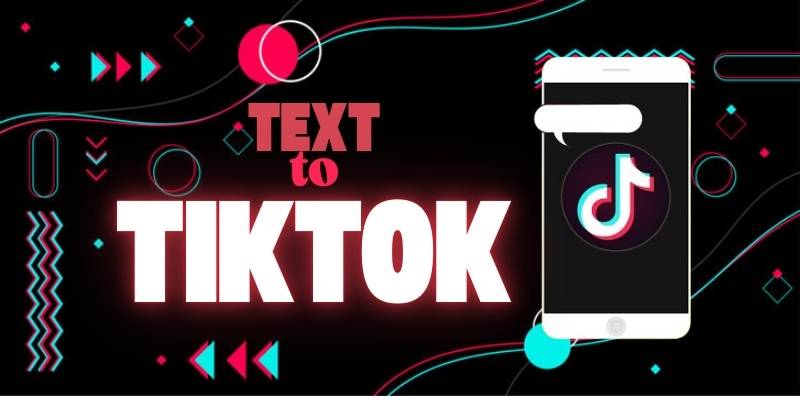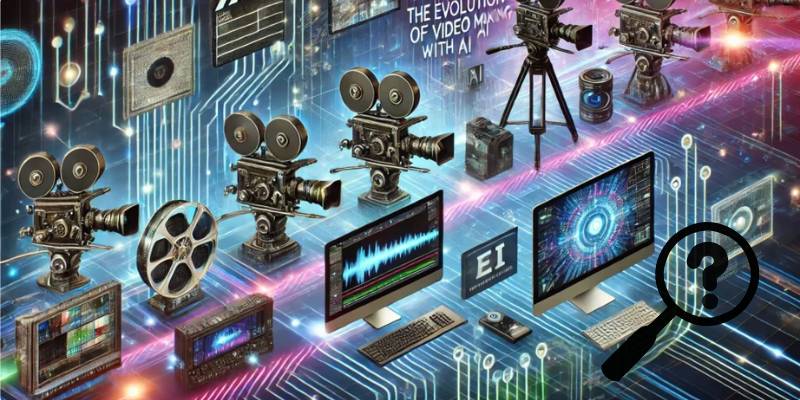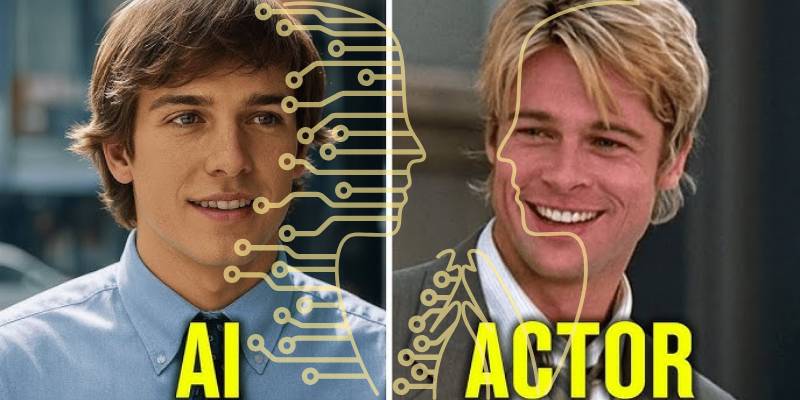If you had told me five years ago that entire TikTok videos could be generated from nothing more than a block of text, I probably would’ve smirked. Video was always supposed to be messy—cameras, lights, retakes, editing marathons.
But here we are. AI has crashed the party, and suddenly the leap from a single sentence to a fully produced TikTok isn’t just possible—it’s happening every day.
This shift isn’t just a technical curiosity. It’s transforming how we create, share, and even trust content online. And while the magic of these tools thrills me, I also feel this undercurrent of unease.
What happens when everything looks polished, optimized, and ready for mass distribution? Do we lose some of the raw charm that made TikTok so magnetic in the first place?
That tension—between innovation and authenticity—is what this article unpacks.
Chapter 1: The Rise of AI in Short-Form Video
TikTok changed the game. Short-form, bite-sized, endlessly scrollable videos became the dominant language of the internet. But creating them consistently is hard. Ask any creator—keeping up with trends while producing polished content burns you out fast.
This is where AI swoops in. Tools now exist that take plain text and spin it into video: avatars reading scripts, background footage auto-selected, captions synced, even soundtracks added. For brands, influencers, and everyday users, that’s a dream.
According to HubSpot’s 2023 Social Media Report, 33% of marketers plan to invest more in short-form video than any other type of content, largely because it drives engagement at unmatched levels. And AI is accelerating that shift.
Chapter 2: Tools for Social Media
The ecosystem of tools for social media creation is exploding. A few big names worth knowing:
- Pictory: Turns blog posts into video summaries with stock or AI-generated footage.
- Synthesia: Uses avatars to deliver text as polished video presentations.
- Runway: Pushes into generative video, creating unique clips from prompts.
- CapCut (TikTok-owned): Offers AI-driven editing and enhancement features.
What excites me here is accessibility. You don’t need a $5,000 camera or a background in editing. The entry barrier has collapsed, and anyone with an idea can experiment.
But there’s also a catch—when everyone has access to the same tools for social media, the line between originality and sameness blurs. Will AI empower creativity, or will it flood our feeds with interchangeable content?
Chapter 3: Social-First Content
If there’s one truth in the TikTok era, it’s this: social-first content rules. Unlike the old days where ads were chopped down from TV spots, TikTok demands content designed for the platform. Vertical video, quick pacing, trends baked in.
AI makes this easier by generating content tailored to TikTok’s rhythms. Scripts optimized for 15 seconds, captions auto-formatted, filters applied. It’s almost like AI knows the algorithm better than we do.
But here’s my opinion—while AI can adapt structure, it doesn’t fully grasp culture. It can remix trending sounds or mimic editing styles, but can it feel the cultural undercurrents? That’s still a human skill, and it’s what separates a viral hit from a forgettable scroll-past.
Chapter 4: Marketing With TikTok AI
Let’s talk business.
Marketing with TikTok AI is already reshaping strategy. Imagine a brand generating dozens of ad variations, each tailored for different audiences. AI can test which hooks work, adjust colors or text, and optimize delivery.
TikTok itself is leaning into this with tools like TikTok Creative Assistant, which helps businesses generate ad copy and visuals.
The results are real: According to TikTok’s 2023 Global Insights Report, brands using AI-driven creative optimization saw up to 30% higher engagement rates compared to traditional campaigns.
For marketers, that’s irresistible. For consumers, though, it raises questions—if everything is optimized by machines, are we being engaged or manipulated?
Chapter 5: Misinformation via Short Clips
Here’s where things turn darker.
Short-form video is already notorious for spreading falsehoods quickly. Add AI into the mix, and misinformation via short clips becomes an even bigger threat.
Picture a hyper-realistic AI-generated avatar making false claims about an election, a medical treatment, or a breaking news event. These clips are short, snackable, and designed to go viral before fact-checkers can intervene.
The Pew Research Center reported in 2022 that 64% of Americans believe fabricated videos and images cause significant confusion about basic facts of current events. And with TikTok’s reach among younger audiences, the stakes are even higher.
This is where my empathy kicks in. It’s one thing to use AI to make ads for sneakers. It’s another to weaponize it to erode trust in media and institutions. That’s not just unethical—it’s destabilizing.
Chapter 6: The Democratization of Video
Not all is bleak. One of the most beautiful things about this tech is accessibility.
For small creators, AI is a lifeline. Students making explainer content. Entrepreneurs promoting side hustles. Nonprofits amplifying causes. AI lets people with no budget compete in a space once dominated by those with resources.
It feels almost poetic—where once you needed Hollywood budgets to be seen, now a teenager with a phone and the right prompt can reach millions.
But I’ll be honest: while I love the democratization, I do worry that the flood of content could drown out meaningful voices. Volume doesn’t always equal value.
Chapter 7: Creativity vs. Automation
Here’s a question I keep circling back to: does AI enhance creativity, or replace it?
On the optimistic side, AI handles the grunt work—editing, captioning, formatting—so humans can focus on ideas. On the pessimistic side, too much reliance on templates could create a culture of sameness.
I’ve seen AI videos that look professional but feel empty, like they were designed by committee. And I’ve also seen raw, imperfect TikToks shot on a phone that went viral because they were real.
Maybe the future isn’t about AI or humans. Maybe it’s about a dance between the two—automation meeting authenticity.
Chapter 8: The Business of Attention
We can’t ignore the economics. Attention is the currency, and TikTok has mastered monetizing it. AI supercharges this by producing more content faster, keeping users hooked longer.
But attention isn’t infinite. At some point, oversaturation risks fatigue. If every other video feels AI-generated, will audiences tune out? Or will they demand transparency labels, the way some demand “organic” food labels?
I suspect a consumer backlash is coming. People crave authenticity, and the more polished things look, the more they’ll hunger for the raw and imperfect.
Chapter 9: Case Studies—From Text to TikTok in Action
- Duolingo has leaned into TikTok with playful, quick AI-enhanced videos featuring its green owl mascot. Engagement soared, proving AI-assisted creativity can still feel fun.
- Small e-commerce shops are turning product descriptions into video ads using AI, slashing production costs.
- Political campaigns (especially overseas) have begun experimenting with AI-generated short clips—raising ethical red flags.
Each case shows the double-edged sword: accessibility, efficiency, but also the risk of misuse.
Chapter 10: My Personal Take
I’ll admit it—I’m fascinated by the possibilities. As someone who struggles with video editing, the idea of typing out an idea and watching it come alive is intoxicating.
But I’m also protective of what makes TikTok special. It’s not the polish; it’s the personality. It’s the imperfect lip-sync, the chaotic comedy, the unexpected vulnerability. My fear is that if AI takes too much control, the platform could lose its soul.
So here’s my stance: AI should be a tool, not a replacement. Use it to free up time, to experiment, to translate ideas into form. But don’t let it strip away the quirks, the humor, the messy humanity that keeps us scrolling.
Chapter 11: Looking Ahead
Where are we headed? Some future predictions:
- Short-term (next 2–3 years): Explosion of AI-driven TikTok ads and influencer content.
- Medium-term (5 years): Consumer pushback demanding clearer labels on AI-generated media.
- Long-term (10+ years): A cultural split—AI handling the bulk of volume-driven content, while human creators carve niches based on authenticity.
The challenge will be balance. Harnessing AI’s efficiency without losing human creativity.
Conclusion
The journey from text to TikTok is no longer science fiction—it’s daily reality. AI can turn words into videos, scale campaigns, and democratize access to storytelling. But it also risks homogenization, ethical pitfalls, and misinformation via short clips that can harm society.
We’re standing at a crossroads. Embrace the tools for social media, but don’t mistake optimization for connection. Explore marketing with TikTok AI, but respect the human need for authenticity. Create social-first content, but remember that culture is lived, not coded.
And if there’s one lesson I carry with me, it’s this: the future of TikTok—and video at large—depends on keeping humanity at the center of the story. AI can give us volume. Only humans can give us meaning.


